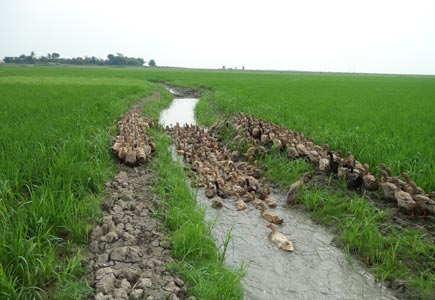Food Security Need Importance

“Food security exists when all people, at all times, have physical and economic access to sufficient, safe and nutritious food to meet their dietary needs and food preferences for an active and healthy life” (World Food Summit, 1996)
Millennium Development Goals first goal is to eradicate hunger and poverty and every body around the world is fighting together against this. There are 925 million undernourished people in the world today. Hunger and malnutrition are number one threat to the health worldwide — greater than AIDS, malaria and tuberculosis combined.
The basic causes of hunger are natural disasters, poverty, conflict, poor agricultural infrastructure and over-exploitation of the environment. Financial and economic crises are recent causes which have pushed more people into hunger.
Facts about Hunger:
- 98 percent of the world’s hungry live in developing countries and 60 percent of the hungry population accounts by women.
- 65 percent of the world’s hungry live in only seven countries: India, China, the Democratic Republic of Congo, Bangladesh, Indonesia, Pakistan and Ethiopia.
- More than 70 percent of the world’s 146 million underweight children under age five years live in just 10 countries, with more than 50 per cent located in South Asia alone.
- 10.9 million children under five die in developing countries each year. Malnutrition and hunger-related diseases cause 60 percent of the deaths
(Source: World Food Programme, 2011)
Food Security in Bangladesh
Almost 2/3 of the population of Bangladesh are farmers and working in the agro sector while approximately 40% of the population are unemployed. The majority of GDP (Gross Domestic Product) (around 30%) are contributed from agro sector when this sector involves 60% of the total labour force in Bangladesh. Food production in Bangladesh has increased over the period of time follows with the population growth. Although food security is not only about having enough production, it is also about having an equal chance of access to food for all. The problem identified globally is that there is enough food in the world, but the distribution is deficient and the problem is the same in Bangladesh. Food is available in Bangladesh, but not accessible for all. The recent increased food price has worsened the situation and additionally 7.5 million people had fallen under poverty line. At the same time Bangladesh is struggling to combat poverty and hunger.
Total population of this country is approximately144.5 millions and this makes Bangladesh to one of the most densely populated countries. The population growth is 1.5% annually. Bangladesh is categorized as one of the world’s Least Developed Country (LDC) since 60 million of the population lives under extreme poverty. Near about 30% of the populations is undernourished and 48% of the children less than 5 years are under weight.
Climate Change and Food Security in Bangladesh
Bangladesh is geographically situated in a tropical climate zone and with its 300 rivers and the biggest delta in the world. Bangladesh is vulnerable to the natural disasters like floods. Bangladesh is one of the most vulnerable countries in the world because of the natural disaster and the climate change. Every year Bangladesh suffers from floods and strong cyclones. Bangladesh is already suffering from the natural disasters which is a major hinder for the food security in Bangladesh. The exploitation of the natural recourses like forests, water and land is just making the situation worse.
Food security in general is mainly affected by the natural disasters in Bangladesh, and natural disaster has such a big affect because Bangladesh is dependent on agriculture. Agriculture system in the country is not modern and many poor people are involved in this sector. Because of the geographical location of Bangladesh floods effects almost entire country. When cyclone or flood comes and wash away everything that those poor people owns they just becomes poorer.

Eminence and Food Security
Eminence has strategic plan to work against food insecurity in Bangladesh where the focus areas are poverty reduction; sustainable food, agriculture, fisheries, forestry and rural development; and preparedness for natural disasters. Eminence has so far conducted an array of research to attain evidence and assess current food security situation:
- A case study of Bangladesh on food and nutrition security in vulnerable communities affected by cyclical climate-related hazards and climate change and for practical guidelines development with Action Contre la Faim (ACF), Mission in Bangaldesh.
- Post Disaster Food Security and Nutritional Status of Children Age under-Five Children funded by Plan Bangladesh.
- End line Evaluation on Knowledge Practice and Coverage of Urban Nutrition and Household Food Security Program funded by Concern Worldwide Bangladesh
- Rapid Nutritional Assessment of Rat Infested Chittagong Hill Tracks Areas, Save the Children UK.
- Follow-up Study of Iron and Folate Supplementation for Adolescent Girls to reduce Anemia program for The Micronutrient Initiative (MI).


